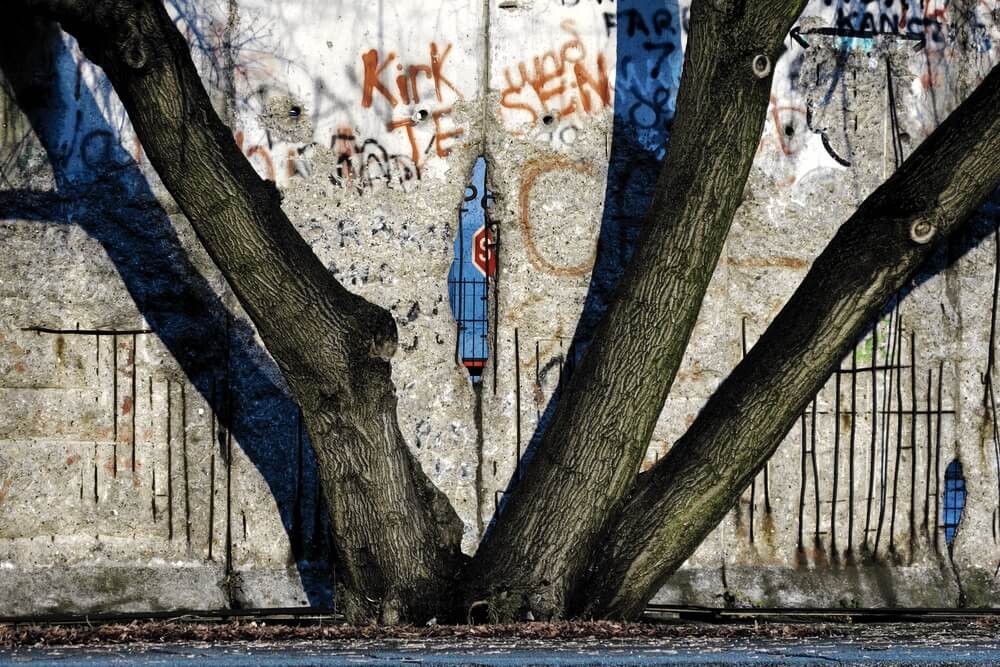
In the GDR, young people were always supposed to be well-behaved, socialist, clean and loyal to the line. And for a long time the GDR leadership succeeded in maintaining this image.
But there were always dissenters, young people who resisted the conformity.
In the second half of the 1970s, the the punk movement emerged in Western countries. Whether it originated in Great Britain is still as controversial as the question of what punk actually is.
Rockers and hooligans often saw them as enemies. Alcohol played a big role in all these groups and so it was no wonder that there were always fights around the scene pubs. There was also a feeling of togetherness among the punks. “Us against all the others”. If a punk was beaten up, the group would gather and rough up the opponents. To their In the early days, hippies and their followers were among the enemy images.
But these defiant punks were just a variety often confused with skinheads. Since both groups danced to ska and 2-tone music, it was no wonder.
The mass of punks was rather peaceful. Listening to music together, drinking beer and discussing, that was their life. And provoke, of course. Annoying the philistines.
The good citizens were naturally shocked. The special clothing and hairstyle aroused suspicion.
So it was no wonder that the reception in the media was mixed. BBC and RIAS Berlin were the main sources from which young people in the GDR heard about punk. Punk music found its way into the programming of these rather conservative stations.
Around 1977, the first punks appeared in the GDR. The state leadership was shocked, how could this occur. Immediately the apparatus of state security began to investigate.
The K1 department of the People’s Police took over the persecution. Since many of the early GDR punks tended to commit violent acts while under the influence of alcohol, the state’s enemy image was clear. They were dealing with antisocial and criminal people.
The Stasi files reflect the incomprehension of those in power. Initially, the punk movement had only found followers in big cities, mainly East Berlin, but by the early 1980s it had also spread to small towns. The brawls decreased and the movement became more political.
Unofficial employees of the Stasi infiltrated the scene. The People’s Police classified around 250 punks as criminals in East Berlin alone. Conditions were imposed on them without trial. They were forbidden to visit restaurants and were only allowed to stay in a few places outside their homes and workplaces. Since the Stasi’s methods included deprivation of work, this often meant quasi house arrest. However, arrests and house searches did not have the success desired by the state in the scene.
Punks started wearing the Jewish star, partly to provoke but mainly to point out the persecution.
The failure of K1 led to the takeover of authority by the Ministry of State Security. Until then, the GDR media had largely ignored the punks, but now a campaign began against the “degenerate and decadent subculture from the Western world”. Male punks were often drafted early into the NVA to “bring them into line”.
Unlike the People’s Police, the MfS was successful. The punk scene was largely crushed by 1983. But there was a hard core that joined forces with like-minded people in other socialist countries to form a new punk movement.
The break-up proved to be a Pyrrhic victory. Many ex-punkers found themselves together in the peace movement. The opposition to the hippie movement disappeared and punkers were among the founders of the group: “Church from below“.
These punks were much more political. Squatting also took place in the GDR between 1983 and 1985. They worked together with environmental and peace activists. Punkers took part in events such as the laying of wreaths at the memorial stone for the anarchist Erich Mühsam.
The “soft-spoken punks” now found new opponents among those skinheads who drifted into the right-wing scene.
And others reacted to the changes by abandoning the remnants of civic behaviour. Alcoholism and petty crime increased sharply among them.
The terms the MfS assigned to punks were “negative-decadent”, “politically unstable”, “demonstrative”, “radaum-like”, “rowdy”, “criminally endangered” or “lacking in development”. They were remarkably similar to the views of Western police authorities.
The difference was in the way the punks were dealt with. In the West, offences such as theft were prosecuted, not clothing or mental attitude. For West German secret services, punks hardly played a role. In the 80s, West Berlin punks were often annoyed at hardly being a “public nuisance”. It happened that punks themselves called the police.
The MfS tried to control the movement in the 1980s. The alternative writer Sascha Anderson was allowed to have GDR punk music pressed by the West German record label “Alternative Rockproduktionen” in 1983. It should come as no surprise to anyone familiar with the GDR that he was a Stasi informer. The album “DDR von unten” with bands like Zwitschermaschine and Schleim-Keim is today considered the first GDR punk album. Before that, there were only music cassettes that were primitively self-recorded.
Schleim-Keim was punished for unauthorised contact with the West, Zwitschermaschine was under the protection of the secret Servicemember.
Repression continued to increase. Leaders were forced to leave the country for the West, and those who remained stubborn ended up in Stasi custody. The performance of punk bands at the blues fair in the Christuskirche in Halle was controlled by the Stasi. the unofficial employees heated up the mood on and during the performance of Namenlos the group was pelted with stones and bottles.
But the punk scene grew again. Despite persecution, more young people were willing to show their opposition to the GDR. But many of the new punks were IM, they received benefits in the form of money and records from the West. Practically every punk band had IMs among its members.
When a second GDR punk album was released in the West in 1986, the band “Der Rest” was not persecuted. A malicious person who thinks badly of it. At the MfS, new paths were taken. The DJ Lutz Schramm was allowed to present an official “underground” programme from March 1986. Punk bands were reported on under the name “Die anderen Bands” (“The Other Bands”).
In 1988, the GDR record company Amiga brought the album “Kleeblatt Nr. 23 – Die anderen Bands” onto the official GDR market. The magazine “Unterhaltungskunst“ was now allowed to report on GDR punk bands for the first time. In 1988, a documentary film was even released. “Whisper and Scream – A Rock Report” which reported positively on the scene.
The Free German Youth jumped on the bandwagon. The state youth organisation FDJ organised its own punk concerts. In October 88, the band “Die Skeptiker” even won a prize at the IXth Workshop Week for Youth Dance Music.
The “real” punks rejected these FDJ state punks. They continued to be persecuted. The MfS continued to try to eliminate known political punks and to recruit the punks who were seen as leaders.
On 17 October 1987, skinheads and punks stormed a punk festival organised by the Zion Church. 30 drunks shouted right-wing slogans and beat visitors. The people’s police, who had been alerted by many by telephone, did not intervene. It took days before 22 skinheads and four punks were arrested.
The centre of gravity of the scene had shifted from East Berlin to Potsdam. Only 599 punks were registered with the MfS in the GDR. The right-wing skinhead scene was now much stronger.
The end of the GDR was a double-edged sword for the GDR punks. On the one hand freedom, on the other an overpowering western music scene. They wanted to market their own bands and didn’t offer GDR punk bands a platform.
Many GDR bands disbanded. A few survived, like Schleim-Keim. The skins and some punks merged into the extreme right-wing scene. The leftist ideals of the other punks fell asleep.
The end of the GDR with its FDJ and planned economy deprived the eastern punkers of their basis. They had adopted the clothes and music of the Westpunkers without knowing the ideology. They were looking for a piece of freedom whose self-organised chaos was an alternative to East-and West system could offer. Their ideas of anarchy were very vague, the feeling of belonging was far more important than ideology. Offences like burglary and damage to property were part of the scene, many East punks believed that was real anarchy. Girls played a subordinate role, only about a quarter of the young punks were female. Women’s rights played no role in the ideology and female bands like “Die rote Zora” were an exception.
For a long time, the East Berlin punk scene thought it was Only “real”, storming bourgeois pubs and discos was part of their self-image. An elitist mentality quickly developed, the “old fighters” despised the young punks. The song “Kidpunks fuck off” became a kind of fight song. In Berlin, anyone who didn’t fit in was called a “plastic” and “roughed up”; the victims were robbed of their punk clothes. Only those who really lived punk were admitted to the “real” scene. But the elitist group did not play a big role.
The big scene after 1983 became more and more dominated by “leisure punks.
The memory of punks in today’s society is marked by the usual glorification of “old fighters”. The punks did not have the influence on the disintegration of the GDR that many attribute to them today. They were a nuisance, but on the other hand it made it easy for the MfS to recognise the rebellious. Without glasnost and the changes in the Soviet Union, the turning point would never have happened.



